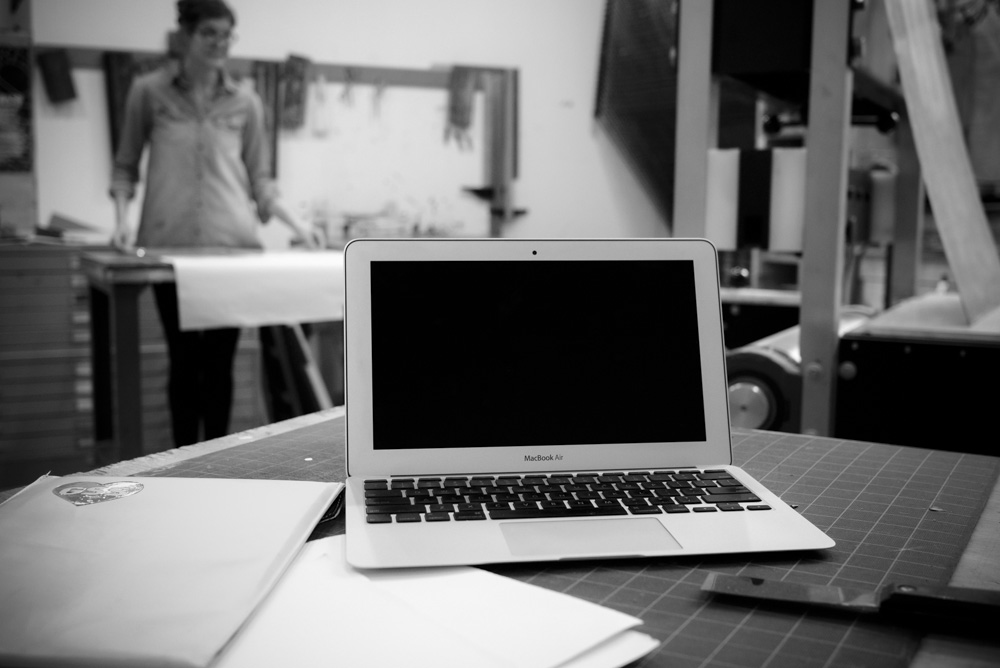Internet for Artists: Best Practices for Effective Emails

This is an excerpt from our Internet for Artists (IFA) Handbook. The IFA handbook is a collaborative online resource given to participants of Creative Capital’s Internet for Artists workshops. On January 23, from 7:00-8:30pm ET, join artist leader Sue Schaffner for our Website, Blog, & Email Essentials webinar where you will learn the full scope of best practices for managing your internet presence as an artist.
Some basic strategies for effective email communications
With the help of email, sending out communications about your projects couldn’t be any easier. Now commonplace and long accepted as a norm within the arts community, email is fast, easy, and cost-effective, but it’s not without its challenges. Getting your reader to open your message and read it is more difficult than you may imagine. Some strategies include:
- Sending quality emails
- Sending updates regularly
- Using software to manage your list
Send quality emails using the three C’s.
Start here and try to create a balance of all three and also incorporate our list of email best practices.
Clear – Now is not the time to use academic language, art lingo, and big words. Make it easy to understand. Try to steer clear of highly technical wording.
Concise – People aren’t going to read your email like its their favorite novel. They’re going to skim it. Make your message as long as it needs to be and no longer. You can always link out to more information.
Compelling – People like stories, background, narrative, and personality! Why is this email important now? What makes me want to read more? Show your passion for the topic.
Updating Regularly
Be conscious of the volume of email you send out per month. Too many emails will inevitably turn people off, but too few emails and you may fall off people’s radars. Only you can determine how many emails to send out each month, but feel free to condense recent news and upcoming projects, rather than sending out one email for each item.
When to send out an email blast: – The general rule of thumb is Tuesday to Thursday in the mornings. Research has shown that many people don’t pay close attention to emails received on other days. Monday emails get buried in inboxes, especially inboxes at work, along with dozens, if not hundreds, of other emails. Friday, Saturday, or Sunday emails are usually ignored as people are focused on their weekends.
What is email worthy: – Any event could be considered fair game, including upcoming exhibitions, performances, readings, screenings, publications, new writings on your blog, etc.
Ask yourself the following question:- Is my announcement concerning an event that others can participate in some way (in the biggest sense of the word)? Exhibitions and performances are activities people can attend, buy tickets to, or consume as interested audience members. If people can’t participate in some way, why tell them about it?
Information to Include
It’s pretty simple, just think: who, what, when, where, how and why. Keep the content of your email short and sweet. For events, provide the name and a description of the event, date, venue, street address, contact information, web site address, and directions to get there.
Subject Line – Your subject line is a headline. It should be as clear and informative as possible. Think again: who, what, when, where, how and why. Here’s a good example: Jane Artist: New Paintings at GALLERY opens Friday
Links – Include links to the venue, to where people can purchase tickets, and to your personal website.
Images – Image attachments make for a more compelling communication, but don’t overdo it – you can always link out to more. Third party email marketing services make this much simpler and keep your email from becoming gigantic, which can lead to slow download times.
Email Signature- Include a block of text (automatically!) that contains your name, address, phone number, email address, and website address. Sometimes it also contains a pithy quote, a current or upcoming event, a disclaimer, or other bit of information. Signatures are great because they not only provide people easy access to your contact information, but also a live link back to your website. And you want to drive people back to your website at every possible opportunity.
To set up an email signature, see the preferences section of your email software. Here’s an example of a signature:
Momenta Art
72 Berry St. Brooklyn, NY 11211
[email protected]
ph/fx 718.218.8058
Eric Heist, Director
Michael Waugh, Assistant Director
For more on managing your internet presence as an artist, tips on making e-mail more efficient and building a blog to promote your work, register for Website, Blog & Email Essentials with artist leader Sue Schaffer taking place Monday January 23, 7:00-8:30pm EST.
